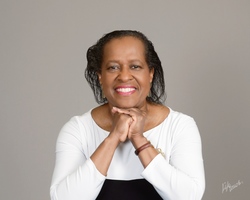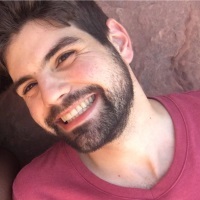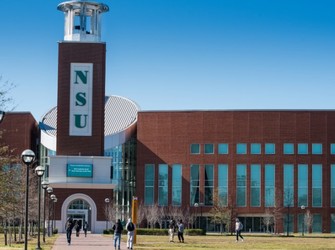
|
The Mathematical Association of America Maryland-District of Columbia-Virginia Section |
- Home
- History
- Main History Page
- Section History Document
- List of Past Officers
- Charter Members
- African-American Participation
- Stories from Section Members
- Section NExT Fellows
- Obituaries
- Smith Award Recipients
- Christensen Award Recipients
- Meritorious Service Award Recipients
- Undergraduate Award Winners
- Meeting Archive
- Past Meetings
- Talk Archive
- Old Section NExT Programs
- Newsletter Archive
- Meeting Minutes Archive
- Miscellaneous Documents
- Meetings
- Minutes
- Fall 2024 Executive
- Fall 2024 Membership
- Spring 2024 Executive
- Spring 2024 Membership
- Fall 2023 Executive
- Fall 2023 Membership
- Spring 2023 Executive
- Spring 2023 Membership
- Fall 2022 Executive
- Fall 2022 Membership
- Spring 2022 Executive
- Spring 2022 Membership
- Fall 2021 Executive
- Fall 2021 Membership
- Spring 2021 Executive
- Spring 2021 Membership
- Fall 2020 Executive
- Fall 2020 Membership
- Fall 2019 Executive
- Fall 2019 Membership
- Spring 2019 Executive
- Spring 2019 Membership
- Fall 2018 Executive
- Fall 2018 Membership
- Spring 2018 Executive
- Spring 2018 Membership
- Fall 2017 Executive
- Fall 2017 Membership
- Spring 2017 Executive
- Spring 2017 Membership
- Minutes Archive
- Newsletters
- Section NExT
- Awards
- Students
- Links
- Search
Fall 2019 Meeting at Norfolk State University
Maryland-DC-Virginia IBL ConsortiumFriday workshop: Building on Strengths, and Building our Community of Inquiry-Based Learning and Teaching Abstract: In inquiry-based learning and other forms of active learning, instructors get a chance to see student work in progress, ask questions, and give feedback. Many instructors have a lot of practice looking at student work from a deficit perspective: what did the student do wrong? How can I help them correct their misconceptions? (Or, how many points should I take off?) In the first hour of this workshop, we will practice looking at student work from an asset model instead: What does the student know? What can the student do? How can I help them build on that? How can the rest of the class use these ideas and insights? We will look at some interesting examples of student work, and discuss various ways of responding and building on its strengths. The second hour of this workshop will be devoted to brainstorming and planning activities and events for the Maryland-DC-Virginia Inquiry-Based Learning Consortium. Thanks to a new NSF grant, we have an opportunity to increase our level of peer collaboration activity and support. Some possibilities include classroom observations, small group collaboration on course materials, lesson study, reading groups, etc. What would you like to be involved in? What topics would you like to see addressed in future workshops? We invite everyone who is even a little bit interested to join us and help us plan for the future. Biographical Sketch: The Maryland-DC-Virginia IBL Consortium was formed in early 2016 as a network of college math instructors with a common interest in inquiry-based learning and teaching. Since then the consortium has organized workshops, panel discussions, and swap sessions at meetings of the MD-DC-VA Section of the MAA, as well as a standalone workshop. We use the term "IBL" broadly, to include ambitious teaching, project-based learning, complex instruction, inquiry-oriented learning, discovery learning, and student-centered teaching. We recognize that IBL can look very different in different contexts, and view our role as supporting instructors in the version that works for them and their students. We welcome those who are new to IBL as well as those who are more experienced. We maintain a website and a Google Group email list; please join us! 
David ClarkRandolph-Macon CollegeBanquet Address:Samurai, Kissing Circles, and the Geometry of Shinto Shrines Abstract: During the Tokugawa Period (1603-1868), Japan was almost completely isolated from the West, including the products of the Western revolutions in math and science. At the same time, the Japanese witnessed a cultural renaissance in the visual and performing arts, music, fashion, ceremony … and mathematics. New problems and solutions appeared in Buddhist temples and Shinto shrines across the Japanese landscape. In this talk, we'll explore how wasan (“wa”=Japanese, “san”=mathematics) became so delicately folded into 18th century Japanese culture Biographical Sketch: David Clark has been teaching at Randolph-Macon College in Ashland, VA since 2008, when he finished his PhD at the University of California, San Diego. He was a national Project NExT fellow and received his college's Art Conway Award for teaching. Originally trained in low-dimensional topology, David has recently become interested in statistics education and math history, and in 2017 was awarded grants from the Japan Foundation and Association for Asian Studies to host an international conference in Ashland on Japanese mathematics. 
Bonita SaundersNational Institute of Standards and Technology (NIST)Saturday Morning Address:Mathematics, Mesh Generation, and 3D Graphics on the Web, and Finding a Career at the NIST Abstract: This multilevel talk will discuss my work at the National Institute of Standards and Technology (NIST), but also look at other research projects that may be found throughout the Applied and Computational Mathematics Division and the rest of NIST. We will describe contributions in mesh generation, scientific visualization, and mathematical reference data motivated by the development of the NIST Digital Library of Mathematical Functions and reveal some interesting tidbits from the history of the original handbook, considered one of the most cited mathematical references of all time. This discussion will provide insight into the journey from my original research and dissertation to using that knowledge in my career at a federal research laboratory. The mention or discussion of other projects in fields such as quantum information theory, materials science, graph theory, cybersecurity and nanotechnology will provide a wider view of the research that goes on at NIST. Some tips for succeeding at such a place and opportunities for internships and postdocs will also be discussed. Biographical Sketch: Bonita V. Saunders is a research mathematician in the Applied and Computational Mathematics Division at the National Institute of Standards and Technology (NIST) in Gaithersburg, Maryland. She has been an active member of MAA for many years. She served as MD-DC-VA Section treasurer from 1999-2002, served on the Selection Committee for the Etta Z. Falconer Lecture sponsored by AWM and MAA from 2004-2009, and on the MAA BIG Committee from 2012-2017. She is currently MD-DC-VA Section Representative to the MAA Congress, and she was interviewed for the Meet a Member column in the June/July 2019 issue of MAA Focus. In January 2020 she will begin serving on the editorial board for Mathematics Magazine under Jason Rosenhouse. Bonita received a Ph.D. in computational and applied mathematics from Old Dominion University, an M.S. in mathematics from the University of Virginia, and a B.A. in mathematics from the College of William and Mary. Her research interests include numerical grid generation, visualization of complex functions data, numerical software for special functions, and numerical solution of partial differential equations. In May 2019 she was elected a Fellow of the Washington Academy of Sciences. 
Kenan InceWestminster CollegeSaturday Afternoon Address:The Untwisting Number of a Knot Abstract: In Greek legend, Alexander the Great was confronted with the problem of untying a very complicated knot and gave up, instead deciding to cut the knot with his sword. The unknotting number of a knot is the minimum number of times one must cut two strands of a knot, pass one strand through the other, and re-glue the knot in order to untie it. We work with a generalization of the unknotting number due to Mathieu-Domergue which we call the untwisting number, the minimum number of times one must cut a knot and twist all the loose strands around each other in order to untie it. We show that, algebraically (i.e. up to our best algebraic approximation), the unknotting and untwisting numbers are the same, while geometrically they can differ arbitrarily. Biographical Sketch: Kenan Ince (they/them; Westminster College) is a Turkish-American mathematician and poet from Texas living on occupied Shoshone, Paiute, Goshute and Ute territory (so-called Salt Lake City). Their research investigates measures of knot complexity (including a generalization and lower bound on the unknotting number called the untwisting number). Their research interests also include mathematical pedagogy, the mathematics of social justice, the theory of 3- and 4-manifolds, and the mathematics of mechanical games such as Lights Out. |
Copyright © 2019 - The Mathematical Association of America
Please send comments, suggestions, or corrections for this page to Brian Heinold at heinold@msmary.edu
Last Modified: 11/13/2019 - 09:17pm
 The Fall 2019 Meeting of the MD-DC-VA section of the MAA was held at
The Fall 2019 Meeting of the MD-DC-VA section of the MAA was held at